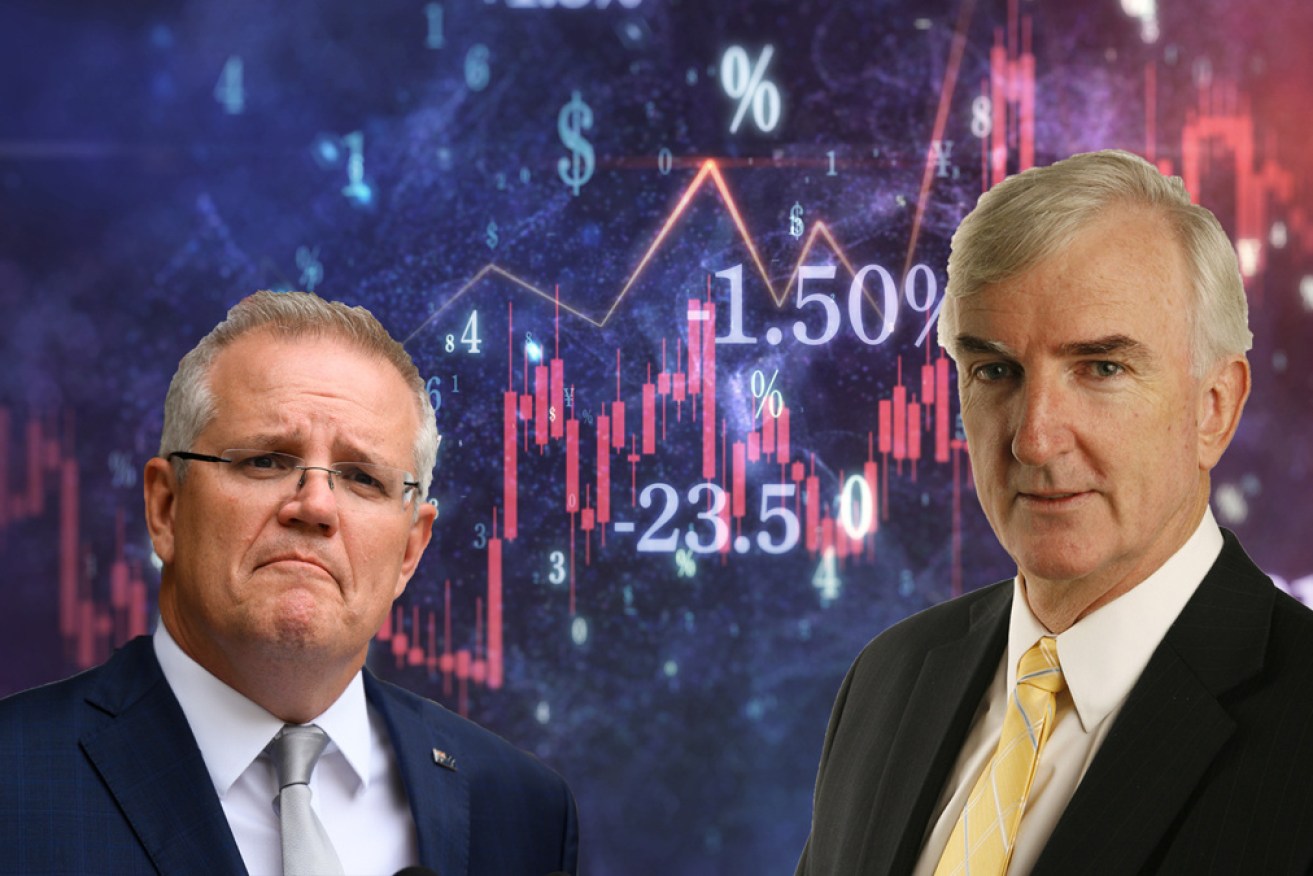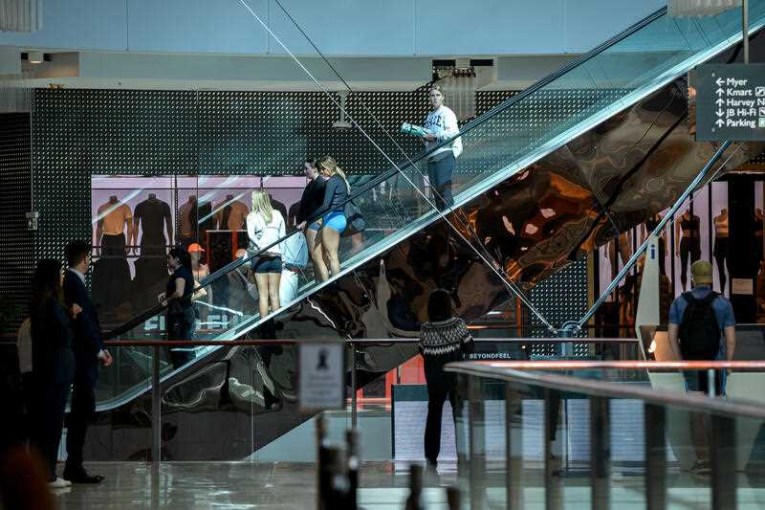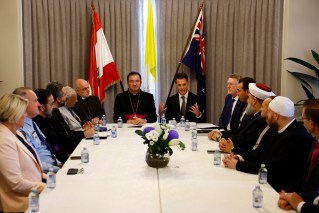The gaping hole between Scott Morrison’s short- and long-term policies


Prime Minister Scott Morrison must start planning now to lift the nation out of a major slump – well beyond the "bridge". Photo: Getty/TND
The big question for the Australian government over the next few weeks is whether it can walk and chew gum at the same time.
Present indications are that it can’t.
Scott Morrison has been scrambling for seven weeks to string together a health, social and economic safety net – and it is a safety net, not a “bridge”.
One way or another, the health story is looking very promising.
The social and economic stories are mixed and remain works in progress.
But the danger now is that the government will continue to scramble, rather than getting ahead of the economic crisis.
It appears blind to the gaping hole opening up ahead of it, preferring instead to focus years down the track on the big-picture economic reform that has eluded the Coalition for the past seven years.
The challenge is to manage the required running repairs for the emergency policies while preparing to fill that hole.
There is no sign of that happening.
Indeed, quite the opposite.
When asked on Four Corners last week if the government was prepared to continue economic subsidies for longer than six months, Josh Frydenberg replied: “These are not decisions that we need to take today. These are not scenarios that we need to contemplate today. What we need to do right now is get as much money out the door as quickly as possible to the people who need it most.’’
You are wrong, Treasurer.
You need to do both – walk and chew gum – or you’ll be caught short again the way your first two attempts at stimulus packages proved inadequate as soon as they were announced.
It’s the biggest bailout in our history. Will the government’s massive rescue effort save the economy from the wrecking ball of Covid19? @David_Speers takes us behind the scenes as the political emergency unfolds, next on #4Corners pic.twitter.com/pudpD4yOEL
— Sally Neighbour (@neighbour_s) April 15, 2020
The government is proceeding on two assumptions that Pollyanna would baulk at: COVID-19 is as good as over in six months; and nearly everyone then goes straight back to work as normal.
For the sake of the argument, let’s go with the optimists on the first bit and assume that, within Australia, the ’Rona is largely contained – that outbreaks are rare enough and tracked down quickly enough so that not many people die and bars and restaurants are allowed reopen and we won’t have to listen to people carrying on about children going to school any more.
That requires a big leap of faith, but let’s make it.
Many, many still won’t go back to work as normal.
Our third and fourth-biggest export earners, big employers, would still be either comatose or severely damaged.
International tourism, other than maybe from New Zealand, won’t come back until there is a proven, reliable vaccine.
International education will be reduced for years. We told them to “go home”.
And then there’s the broader hysteresis – the lasting hangover of all the businesses that don’t magically “bounce back on the other side”, that remain shuttered with the resultant loss of employment.

Long queues at Centrelink offices could continue for years to come. Photo: AAP
Left to its own devices, the jump in unemployment takes years to subside.
Remember that ours was a sub-par economy to begin with, one that was suffering a retail recession and stagnant real take-home wages growth.
Before the crisis hit, a high proportion of Australians had marginal savings and little desire or ability to spend.
Add the many who were doing OK but are now suffering months of sharply reduced income while interest continues to accrue on mortgages.
Already weak demand will remain weaker beyond the end of 2020.
And how long does it take to rebuild confidence?
How long before people are going to be confident about filling a theatre or concert hall again?
The idea of continuing but relaxed social distancing is in the mix.
The reality of the restaurant trade is that it has high fixed costs – half or quarter-full restaurants go broke. Ditto theatres.
Colleague Kirstie Clements has written on these pages about the impact on the fashion industry.
Yes, there are some online sales, but another major industry has effectively lost a couple of seasons.
The shoes you might buy next winter are already sitting in warehouses, unsold for this winter.
At the macro level, the population growth we’ve relied on for years for growth will be reduced – the visas not applied for or not processed will be part of the hysteresis.

The economy’s reliance on housing has been hit by the surge in property prices ending.
Before the virus, the Reserve Bank and Treasury were betting the house – so to speak – on a surge in housing prices leading to a resurgence in the building industry to get the economy firing in 2021. Housing prices are no longer surging.
Many a business has learned to get by with fewer people. They won’t be rushing to rehire. And many have learned to work from home, with implications for the health of the commercial real estate industry.
Sure, there will be some countervailing measures – to the extent that they can afford to holiday, Australians will be doing it at home next year, if they’re allowed – but they’re small beer in the overall challenge.
There’s much more to it, but you get the picture.
Which is why the government’s job is not over with handing out billions of dollars now – it has to actively create jobs, not leave it to “the market” to slowly grind out a solution over a decade, as happened after the 1990-91 recession.
And that is why the Australia Institute’s suggested policy framework for pouring jobs into the economy is so timely.
“Pouring money into the economy is the appropriate first response to a crisis like that created by COVID-19, but pouring jobs into the economy is more important still,” the Australia Institute economists warned.
Their discussion paper was worried that the government might pursue less-efficient job creation projects – the greater danger is that the government is pursuing no job creation at all when the six-month subsidies run out. Zero. Zilch. Nada.
The big-picture stuff about improving productivity is years away.
First we have to navigate the next financial year without getting stuck in a lasting recession.
The whole “building a bridge” metaphor done to death by Scott Morrison is wrong.
He stole it from the Reserve Bank governor, who was talking specifically about monetary policy, about maintaining credit and liquidity. It’s a fair metaphor for that.
For the overall economy and fiscal policy, there is no bridge. We’re not motoring over the recession chasm that’s opened up, we’ve fallen into it.
What the couple of hundred billion dollars in proposed spending does is provide cushions to soften the landing at the bottom of the chasm and provide safety nets to catch some people and businesses so they don’t also fall to the bottom and will have a shorter climb out.
What’s needed next is a mix of ladders and ropes to assist that climb out – the jobs the government needs to pour into the economy.
And there’s no sign of it. No hint the government is capable of considering it while still trying to fix the JobKeeper mess and toy with its trickle-down agenda later on.
Wouldn’t it be a bastard if we spent $200 billion and didn’t finish the job? That’s what’s in prospect.
Last week RBA governor, Philip Lowe presented the bank’s “central scenario” of the sharpest economic contraction since the Great Depression, but then a surprisingly brisk bounce back next year based on the COVID restrictions being lifted.
During that speech and subsequent media conference, Dr Lowe repeated what he and his predecessor have often said about the desirability of broader reform and the Productivity Commission’s wish list to reinvigorate the economy.
It has been amusing for anyone playing along to see the way the government and the Business Council media cheer squad seized upon those comments as if they were anything new, as if they haven’t been pretty much the RBA’s constant commentary during the Coalition’s seven years in government.

Reserve Bank of Australia governor Philip Lowe has long pushed for reform. Photo: AAP
I put to Dr Lowe that there was a big gap between the present six months of emergency funding and the eventual impact of the worthy productivity initiatives, that “the bridge” looked considerably longer than six months.
“Do you envisage further funding will be needed in order to prevent the real unemployment rate going significantly above six per cent?” I asked.
Understandably, he dodged the question – saying it depends on how long the restrictions remain, that he was encouraged by the Prime Minister saying they thought we were on the road back and that restrictions would be progressively lifted.
“And as that happens, economic activity will return towards normal,
he said.
“I think we all hope that that takes place as quickly as possible.”
“Hoping could mean we’re caught short when it doesn’t,” I suggested.
Dr Lowe replied that none of us had a crystal ball and various scenarios – worse scenarios – would be outlined in the bank’s Statement on Monetary Policy in a few weeks.
“But we shouldn’t catastrophise here,” he said.
Yes, governor – but what if it is a catastrophe?








